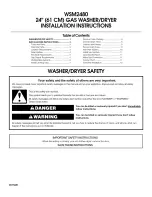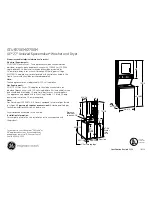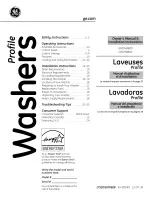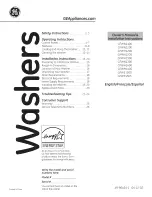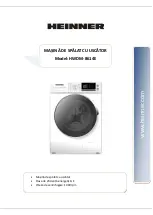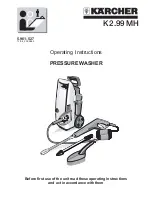
Maintenance
m
CAUTION!
Before working on the pressure washer,
remove the battery from the compartment.
1.
To ensure good performance, check and clean the water
inlet filter. Remove the filter and rinse with warm water to
prevent any foreign matter from clogging the pump
(Figs. 26 – 27).
2.
Clean the nozzle with the needle clean-out tool provided
(Fig. 28). Remove the spray wand from the gun; remove
any dirt from the nozzle hole and rinse.
3.
Remove additional debris by back flushing water through
the nozzle and spray wand. To do this, place the end of
your garden hose (with water running) to the tip of the
nozzle, pushing water and debris out of the back opening
of the nozzle and spray wand.
Disposal
Recycling the Washer
•
Do not dispose of electrical appliances as unsorted
municipal waste. Use separate collection facilities.
•
Contact your local government agency for information
regarding the collection systems available.
• If electrical appliances are disposed of in landfills
or dumps, hazardous substances can leak into the
groundwater and get into the food chain, damaging your
health and well-being.
•
When replacing old appliances with new ones, the retailer
is legally obligated to take back your old appliance for
disposal at least free of charge.
Rec Disposal
The product comes in a package that protects it against
damage during shipping. Keep the package until you are
sure that all parts have been delivered and the product is
functioning properly. Recycle the package afterwards or keep it
for long-term storage.
WEEE symbol. Waste electrical products should not
be disposed of with household waste. Please recycle
where facilities exist. Check with your local authority
or local store for recycling regulations.
Battery C Disposal
Always dispose of your battery pack according to federal,
state, and local regulations. Contact a recycling agency in your
area for recycling locations.
m
CAUTION!
Even discharged battery packs contain
some energy. Before disposing, use electrical tape to cover
the terminals to prevent the battery pack from shorting, which
could cause a fire or explosion.
m
WARNING!
To reduce the risk of injury or explosion,
never burn or incinerate a battery pack even if it is damaged,
dead or completely discharged. When burned, toxic fumes and
materials are emitted into the surrounding atmosphere.
1.
Batteries vary according to device. Consult your manual
for specific information.
2.
Install only new batteries of the same type in your product
(where applicable).
3.
Failure to insert batteries in the correct polarity, as
indicated in the battery compartment or manual, may
shorten the life of the batteries or cause batteries to leak.
4.
Do not mix old and new batteries.
Fig. 26
Water
inlet filter
Garden hose adapter
Base unit
Fig. 27
Water inlet filter
15º
Fig. 28
Needle clean-out tool
16
























